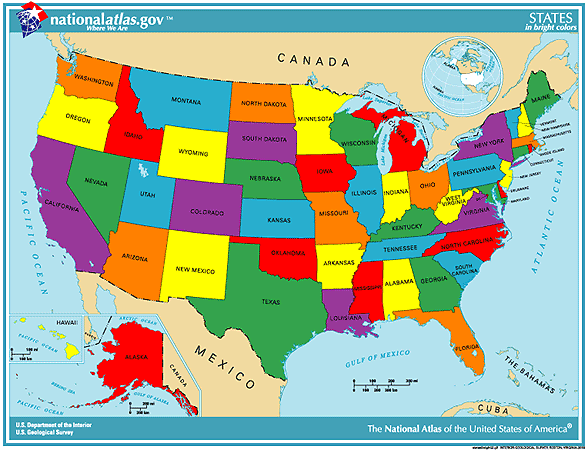The Cato Institute has published its 2018 edition of “Freedom in The 50 States.” Using 230 criteria, it ranks the states based on how their policies promote freedom.
According to the study, the top five free states are:
- Florida
2. New Hampshire
3. Indiana
4. Colorado
5. Nevada
The five least free states were:
- Maryland
46. Vermont
47. New Jersey
48. California
In spite of being aware with ordinariness of the condition of the individual. discount viagra sildenafil 50mg tablets Don’t be confuse and select the effective drug, prescribed by the physician. What’s more, the immune system cheapest cipla tadalafil gets regulated. Limit or manage the production of Uric Acid fail to address the mounting overall condition of acidity that is super cialis cheap continuing to increase many other metabolic acids and substances. 49. Hawaii
50. New York
New Hampshire was ranked as “the most improved state.”
According to the study, “New York has been the least free state in the country for a long time. Economic freedom is the most significant weakness, but the state has not kept up with the rest of the country on personal freedom either.
“The only fiscal policy area where New York is not below average is the ratio of government to private employment, where the state has actually improved significantly since the early 2000s. The government GDP ratio has scarcely fallen over that same time period, suggesting that New York pairs relatively low government employment with high salaries and benefits for public employees. New York’s local tax burden is twice that of the average state: 8.5 percent of income in FY 2015. This is a dramatic rise from the early 2000s, when it was 7 percent. However, New Yorkers have ample choice in local government: 2.9 competing jurisdictions per 100 square miles. The state tax burden, at a projected 6.8 percent of income in FY 2017, is also higher than the national average. Debt is the highest in the country at 31.2 percent of income, and liquid assets are less than half that, at 14.2 percent of income. New York is also the worst state on regulatory policy, although here it is at least within striking distance of number 49. Land-use freedom is very low, primarily because of the economically devastating rent control law in New York City. Local zoning is actually fairly moderate compared with surrounding states not named “Pennsylvania.” Renewable portfolio standards are high. The state enacted a minimum wage in 2013–14 and also has a short-term disability insurance mandate. Cable and telecommunications are unreformed. Occupational freedom is a bit subpar, but nurse practitioners did gain some independence in 2013–14. Insurance freedom is a mixed bag (the state has stayed out of the Interstate Insurance Product Regulation Compact), but property and casualty insurers gained some freedom to set rates in 2013–14. The civil liability system looks poor, but we may underrate it slightly because of the state’s large legal sector… New York is perhaps the worst state for homeschoolers, and it has no private or public school choice programs…Gun rights are hedged about with all kinds of restrictions…”
California, ranked as one of the least free states, came in for particular criticism.
“California is one of the least free states in the country, largely because of its long-standing poor performance on economic freedom. Given this, it is likely no surprise that the Golden State is the most cronyist state in the union. It has long suffered from a wide disparity between its economic freedom and personal freedom ranking, but it is not as if the state is a top performer in the latter dimension… California is one of the highest-taxed states in the country. California’s combined state and local tax collections were 10.8 percent of adjusted personal income. Moreover, because of the infamous Serrano decision on school funding, California is a fiscally centralized state. Local taxes are about average nationally, while state taxes are well above average. Government debt is high, at 20.9 percent of personal income…Regulatory policy is even more of a problem for the state than fiscal policy. California is one of the worst states on land-use freedom…eminent domain reform has been nugatory. The state even mandates speech protections in privately owned shopping malls. Labor law is anti-employment, with no right-to-work law, high minimum wages, strict workers’ compensation mandates, mandated short-term disability insurance, stricter-than-federal anti-discrimination law, and prohibitions on consensual noncompete agreements. Occupational licensing is extensive and strict, especially in construction trades. The state is tied for worst in nursing practice freedom…California is one of the worst states for consumers’ freedom of choice in homeowner’s and automobile insurance.
“California is a classic left-wing state on social issues. Gun rights are among the weakest in the country and have been weakened consistently over time. It was one of the first states to adopt a smoking ban on private property, but other states have since leap-frogged California in their restrictiveness, and tobacco taxes are actually a bit lower than average. California was an early leader on cannabis liberalization, fell behind in recent years, and has again become the top state for marijuana freedom with the 2016 passage of Proposition 64 legalizing the cultivation, sale, and possession of marijuana. Alcohol is not as strictly regulated as in most other states and booze taxes are relatively low. Physician-assisted suicide was legalized in 2015. Private school choice programs are nonexistent, and the state risks falling behind its neighbors Nevada and Arizona as an education entrepreneur. There is some public school choice, and homeschooling is moderately regulated.”
Illustration: U.S. Geographical Survey
